1974 Jaguar E-Type Roadster V12 Series 3 rarely seen ’70s hue of Heather
We catch up with a remarkably original Series 3 E-Type in that rarely seen ’70s hue of Heather.
WORDS & PHOTOGRAPHY PAUL WALTON
E-TYPE SURVIVOR
It doesn’t get more Seventies than this beautifully preserved Series 3 with Heather paintwork and an eight-track player.
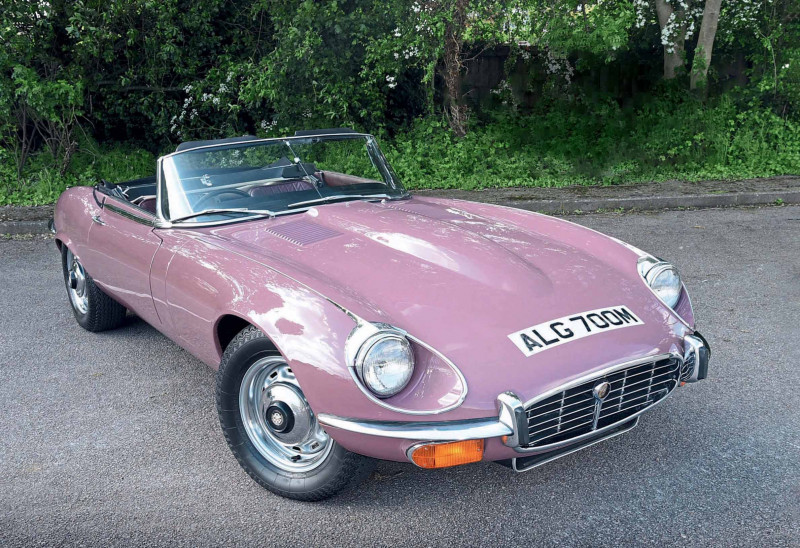
Striking. That's the only word to describe this 1974 Jaguar E-Type Series 3 open-two-seater. Although Heather (that's pink to you and me) was never a popular colour at the time, especially for a supposedly 'masculine' sports car, it still results in an eye-catching sight.

It was mainly because of the colour that the car's original supplying dealer didn't want to sell it and why its first owner kept it for almost five decades, only deciding to sell his pink pride and joy earlier this year.
The E-Type was first registered on 8 April, 1974 by a Cheshire-based British Leyland dealer, Wood Lane Garage in the village of Timperley, a few miles to the south of Manchester. The car was initially to be the garage's demonstrator but Robert Stott, son of the former managing director Ian Stott, admitted in a recent letter to the current vendor it was mainly for his father's own use. «I suspect he intended to keep the car due to its striking and rare colour,» he wrote.
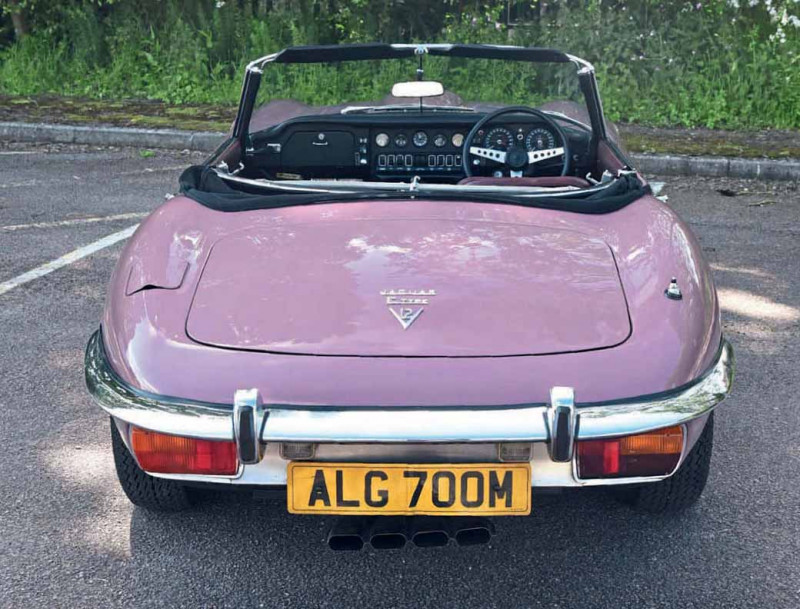
Only arriving in 1973, Heather was one of the many garish hues Jaguar was offering at the time that also included Green Sand and Turquoise. It's not known how many E-Types were ordered in Heather, but due to its feminine undertones, it can't have been many compared to more conservative choices such as Silver, British Racing Green and Regency Red.
When the chance came to sell the car six months later, the dealer took it. «Profit is always a temptress,» explained Robert in the letter. Mr Stott senior apparently replaced the E-Type with another, a blue convertible, which this time he kept for over 35 years, only selling in 2008.
The buyer of the Heather-coloured OTS was a local businessman we're calling Mr S. With he and his family wishing to remain anonymous, there's little to say about him except he obviously loved the car because he kept it for 48 years. Yet in that time, the car covered a mere 23,000 miles resulting in an annual average of just 480. To put that into perspective, that's like driving the car from the Blackpool Tower to the Tower of London and back again before leaving it in the garage for the rest of the year.
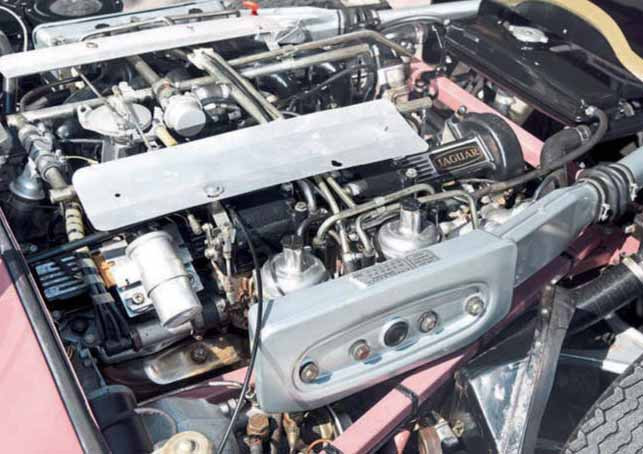
Poor health saw the V5 later transferred to his son but Mr S remained the car’s custodian and the only one to drive it. He took what must have been the hard decision to sell his beloved E-Type earlier this year and it’s currently available through a specialist, Car-Iconics, based in Rutland. Although Mr S has confirmed to Car- Iconics’ Dan Gannon that the E-Type is still largely unrestored, the huge amount of paperwork that comes with the car proves the continuous maintenance it has received throughout its lifetime. A replacement hood has previously been fitted and in 2018 the car was given a significant recommissioning which included a differential rebuild, inlet manifold gaskets, carburettors and radiator drain and flush. There was further maintenance and servicing in 2019 and again three years later.

Although physically far from perfect, the handful of minor imperfections give the car a unique character that a full restoration would have lost. I also like how it still wears the original steel wheels with their chrome hubcaps that were more typical of the period rather than the then optional wires that many Series 3s have since been fitted with.
It’s also something of a time warp because when I open the door and climb inside, the centre console still has an original Radiomobile stereo and on the passenger side parcel shelf are three eight-track cassettes. It could easily be the hot summer of 1976 and Mr S has just parked the car after driving to work with the roof down while listening to The Carpenters’cover of Ticket to Ride.
Although parts of the interior also aren’t perfect with some of the black switchgear scratched in places, again this only increases the car’s personality and further proves the car’s originality.
As I nestle into the generously sized driver’s seat upholstered in a soft, maroon-coloured leather before adjusting its position slightly to create more legroom, I’m reminded how spacious the Series 3 is compared to the earlier, more cramped versions. I check the odometer in the speedo and see it’s still only reading a mere 23,301 miles.

The big V12 churns over a couple of times before catching, the unit sounding as quiet as it is smooth with barely any vibrations working their way into the cabin. With synchromesh on all four gears the Jaguar-produced manual transmission is far easier to use than the awkward Moss box that was fitted to the very early, pre- 1965 models. Admittedly the physical throws between each gear are longer than the Forth Bridge, but its smooth action results in easy and unhurried progress.
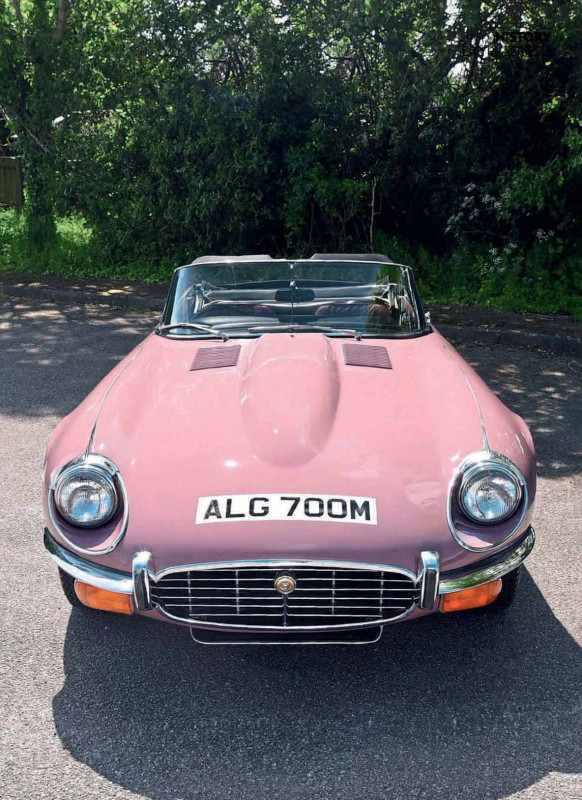
Up until now the car has felt refined but not overly exciting but with the road starting to straighten, I ease the transmission down to third and nail the throttle hard. With 282bhp when new, the E-Type Series 3 was one of the most powerful sports cars on the market at the time and it still feels fast. The V12 responds the moment I squeeze the pedal, resulting in a sudden and forceful surge of speed. Yet thanks to the smoothness of the engine, it’s never loud or coarse, delivering its huge amounts of power with less drama than a typical episode of EastEnders.
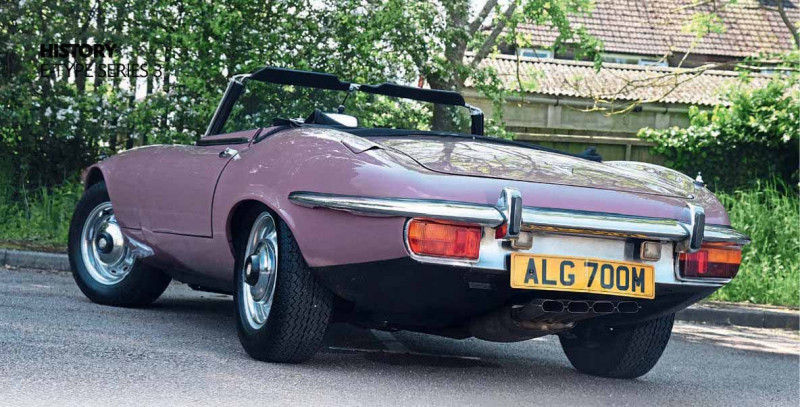
At 1533kg when a Triumph Spitfire 1500 weighs just over 800kg, the Series 3 is reasonably heavy for a two-seater sports car. Yet it hides its bulk well and with accurate if overly-assisted steering, plenty of grip and controlled body roll, the Series 3 – even a bright pink one – remains one of the greatest sports cars of its era.
It takes just a few minutes behind the wheel to understand why the original dealer, Ian Stott, didn’t want to sell the car and why Mr S kept it for so many years. Not only has the lack of mileage kept it in a wonderfully original condition, but whether it’s the colour or how it drives, everything about the car remains as striking now as when it was new.
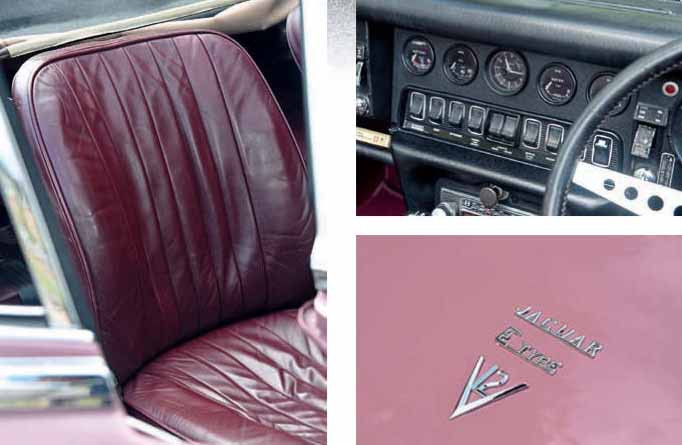
Thanks to: Car-Iconics (car-iconics.com)
Interior is just as striking as the paintwork, and just as original too. The ’70s vibe is completed by the Radiomobile eight-track player.
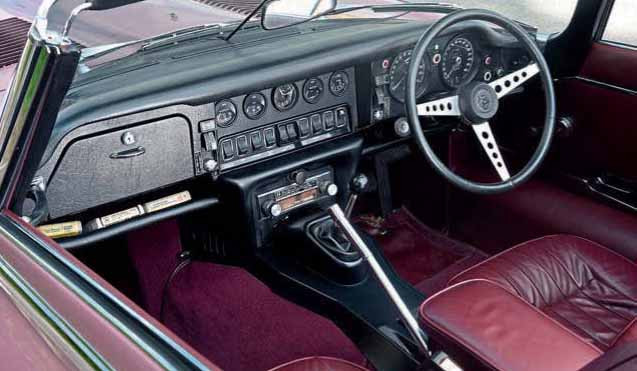
Modern plates look out of place but the car’s patina gives away its superb originality Steel rims and hubcaps are a nice original touch when many Series 3s have retro-fitted-wires.
The longer wheelbase of the Series 3 translates to a noticeably more spacious cabin
It still wears the original steel wheels with their chrome hubcaps


